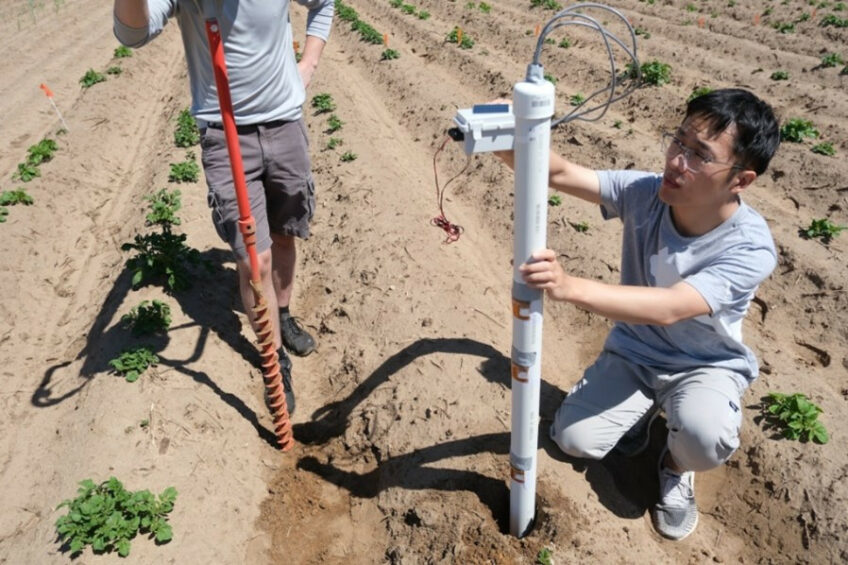Low-cost printed nitrate sensors enhance precision farming

Engineers at the University of Wisconsin–Madison have developed low-cost sensors for real-time, continuous monitoring of nitrate in different soil types.
These printed electrochemical sensors promise significant economic benefits by helping farmers make better-informed nutrient management decisions. Current nitrate monitoring methods are laborious and expensive, lacking real-time data. The new sensors aim to provide a more efficient and cost-effective solution. “Our sensors could give farmers a greater understanding of the nutrient profile of their soil and how much nitrate is available for the plants, helping them to make more precise decisions on how much fertilizer they really need,” says Joseph Andrews, assistant professor of mechanical engineering at UW–Madison, who led the research.
Inkjet printing process
The sensors employ an inkjet printing process to create potentiometric sensors, enhanced with a polyvinylidene fluoride layer. This material’s tiny pores allow nitrate ions to pass while blocking soil particles, and its hydrophilic properties attract and absorb nitrate-laden water. “So, any nitrate-laden water gets preferentially soaked into our sensor, and this is really important because soil also acts like a sponge, and you’re going to have a losing battle for getting moisture to come to your sensor unless you can match the water absorption potential of soil,” Andrews explains.
Demonstrating accurate results
The sensors have been tested in sandy and silt loam soils in Wisconsin, demonstrating accurate results. The team is now integrating these sensors into a multifunctional system called a “sensing sticker,” which includes moisture and temperature sensors. These stickers, attached to a rod and buried at different soil depths, allow comprehensive monitoring of nitrate leaching and movement. “By measuring the nitrate, moisture, and temperature at different depths, we can now quantify the process of nitrate leaching and capture how nitrate is moving through the soil, which hasn’t been possible before”, says Andrews.
Future plans
Further testing with 30 sensing rods is planned for summer 2024 at UW–Madison’s Hancock and Arlington Agricultural Research Stations. The technology is being patented through the Wisconsin Alumni Research Foundation.
Join 17,000+ subscribers
Subscribe to our newsletter to stay updated about all the need-to-know content in the agricultural sector, two times a week.



